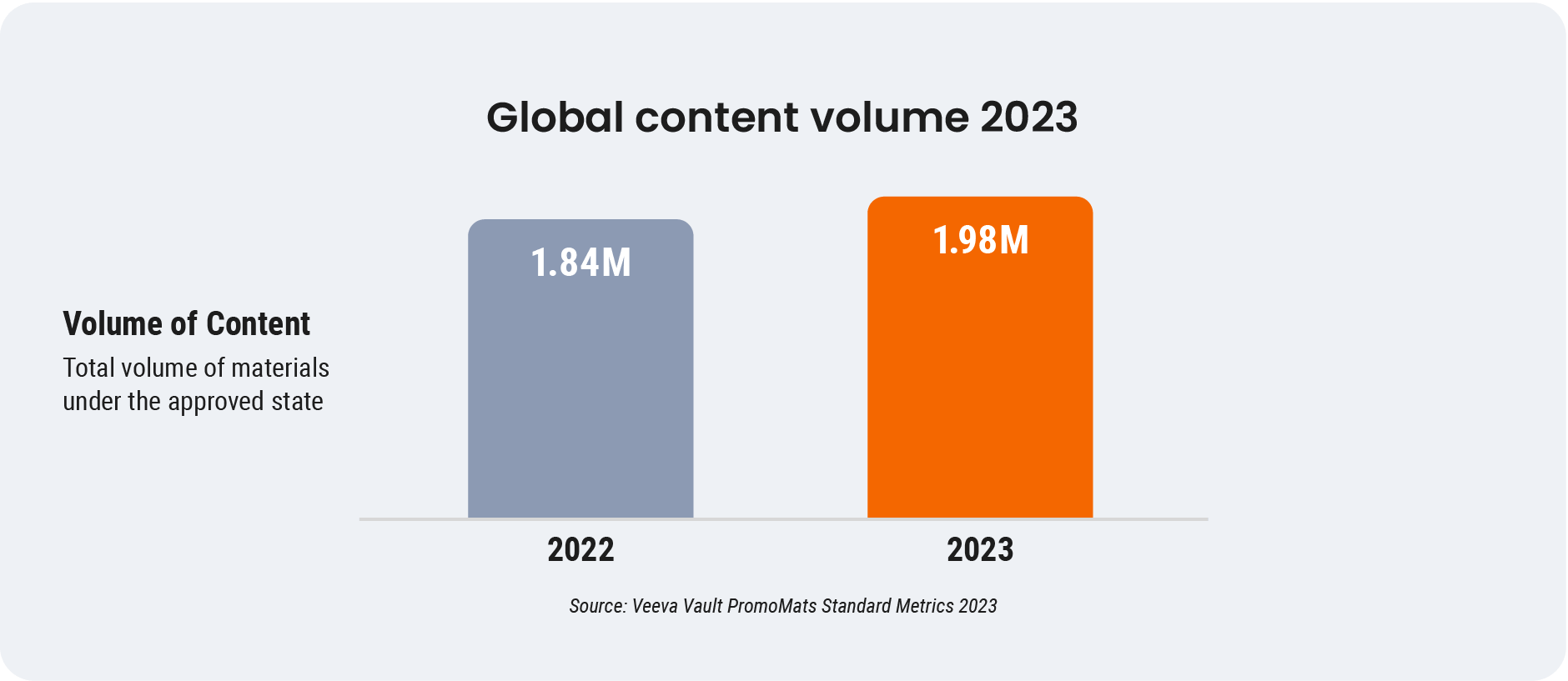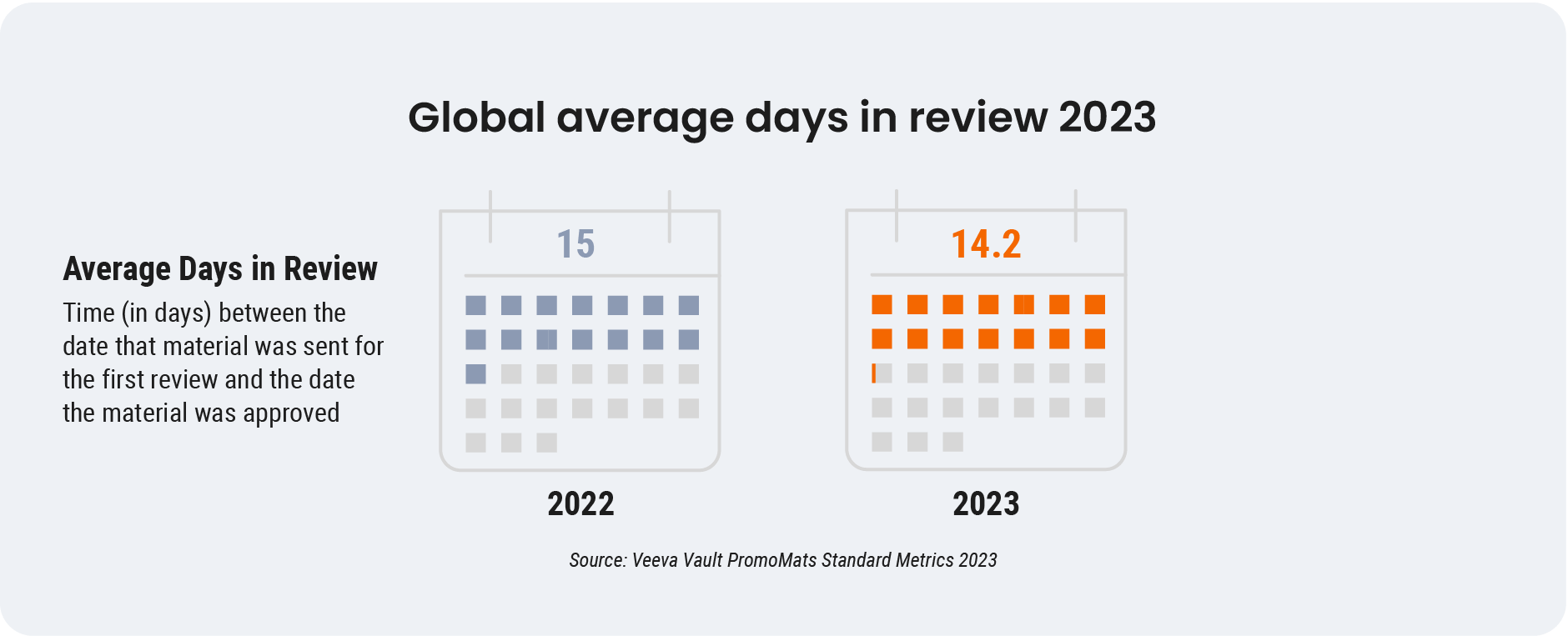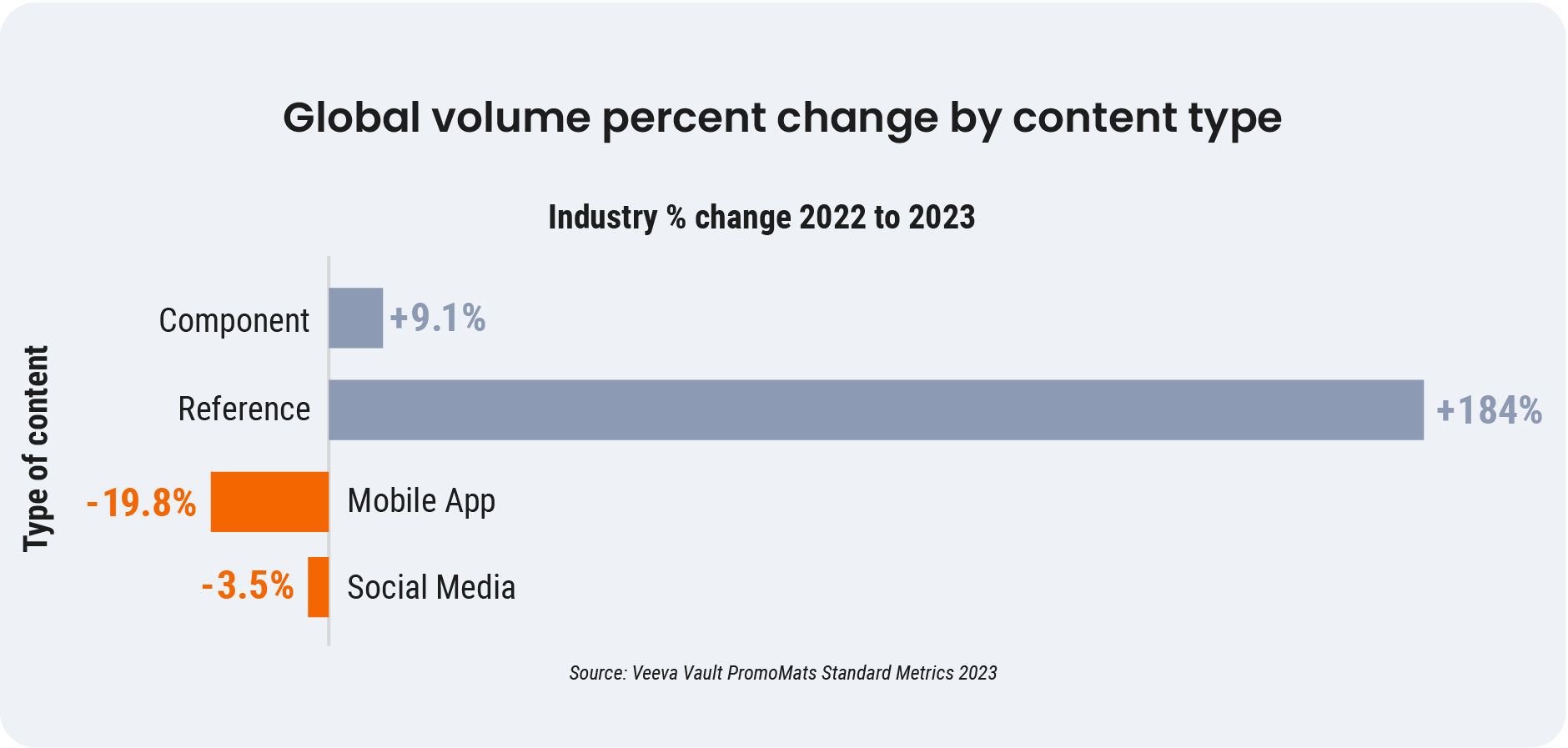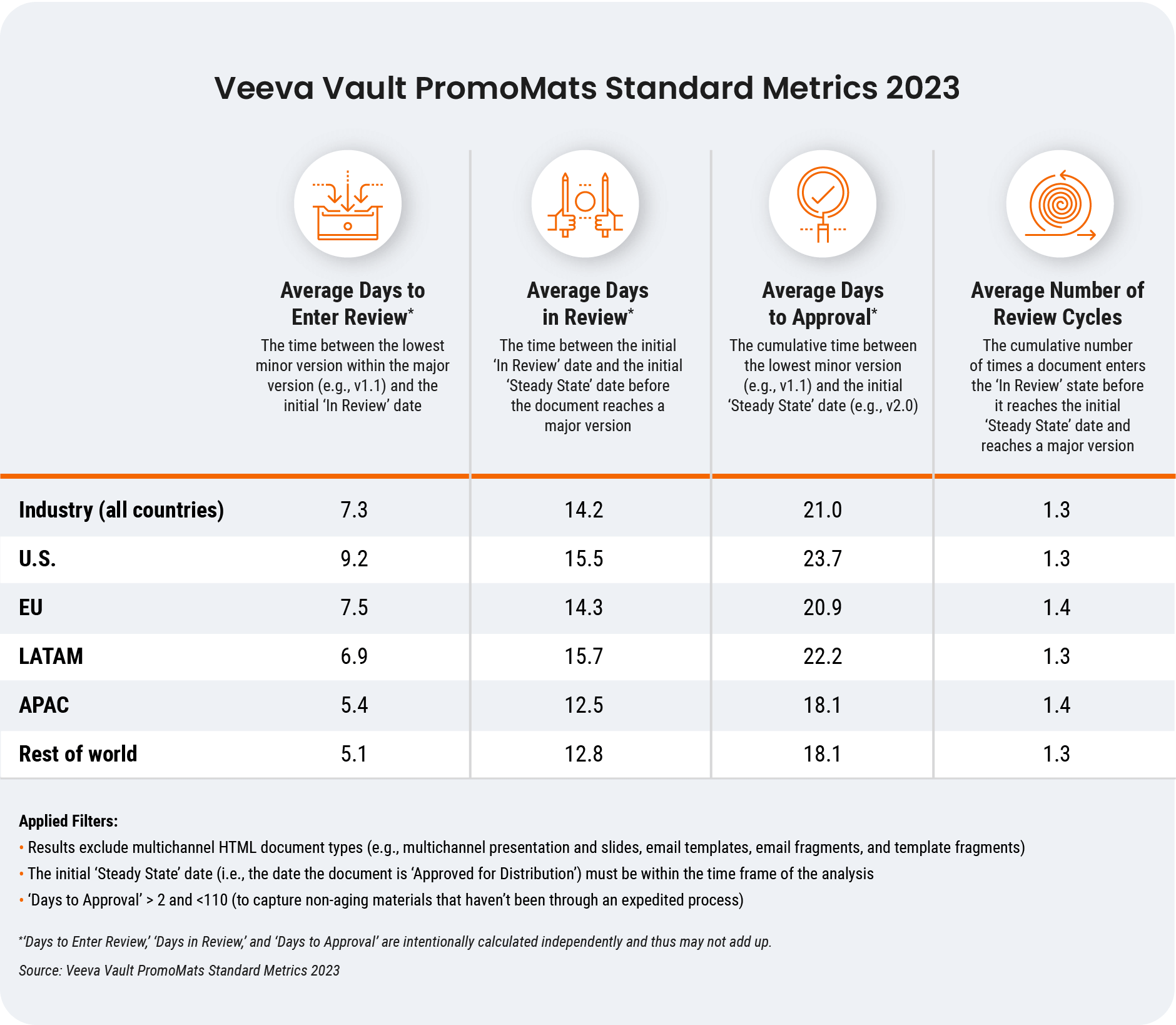Biopharmas are creating more content every year with few signs of slowing down. In 2023, content creation was 7% higher globally and 29% higher in the U.S. compared with the prior year. Volume remained steady in the EU during the same period.

The numbers beg the question: Is all of this material bogging down content processes at biopharmas or creating delays in getting information to stakeholders and audiences? Interestingly, high-level data from 2023 shows that rising content volumes aren’t affecting speed or efficiency:
- The number of review cycles was down across all markets globally
- Among U.S. companies, days in review decreased by more than 25% to 16 days
- The EU saw no significant change in days in review compared to the prior year

Personalization dictates channel focus
The most significant increase in content type in 2023 was in the use of modular content building blocks, components, and references. The data may reflect industry-wide adjustments to centralizing claims libraries and adapting channel strategies in preparation for personalization and omnichannel engagement.
Meanwhile, decreases in the already-low use of social media and mobile apps could signal that companies are taking a more thoughtful approach to compliance in their channel strategy.

Content strategy is evolving
The industry is demonstrating incremental efficiency improvements. However, rapidly rising demands for personalized and relevant content at the individual HCP level indicate that teams will be pressured to create unmanageable volumes. Organizations that try to keep pace while using existing resources and processes will reach a tipping point.
Some have already begun to innovate to become more agile by:
- Adopting a modular approach to content
- Using tier-based reviews to get content to market faster
- Using Veeva partner-sourced tools that connect with MLR to improve content quality
Benefits of using industry-standard metrics
The tried-and-true way to improve the content lifecycle has been to measure internally, modify, and repeat. Now, adding industry comparisons is equally essential. Aggregated, anonymized, and robust industry data helps commercial teams independently understand and identify areas of optimization — and even see where they lead the field.
Industry-standard metrics provide insights for continuous improvement, accelerating the production of tailored content, reducing review cycles, and maintaining quality and compliance.
Benchmarking is ‘self-serve,’ done by mapping your content metrics to those of the industry on a granular level. The measures are based on content duration states, represented at the top of the following chart.

Regularly reviewing external data as part of your strategy increases the odds of meeting the demands for relevant and personalized content faster and at scale. Content benchmarks can alert you to shift resources to a weaker part of the process or identify quick fixes that deliver significant returns. For example, if your review cycles have increased or stalled in MLR, you can focus on improvements, such as making changes to the tiers of review in your process, critically reviewing which review members are needed for each content type, or adding concept meetings.
Looking at data trends over time can draw attention to process deviations. For example, it could show that a specific content format had faster review times—not because of greater efficiency but because the team wasn’t following a mandated process.
Beyond self-service, you can partner with experts to analyze internal data against industry benchmarks and trends to gain unique insights. Typically, such engagement delivers recommendations for process enhancements, guidance in setting and achieving KPIs to enhance operational efficiency, and help with change management.
View a Vault PromoMats standard metrics demo.
